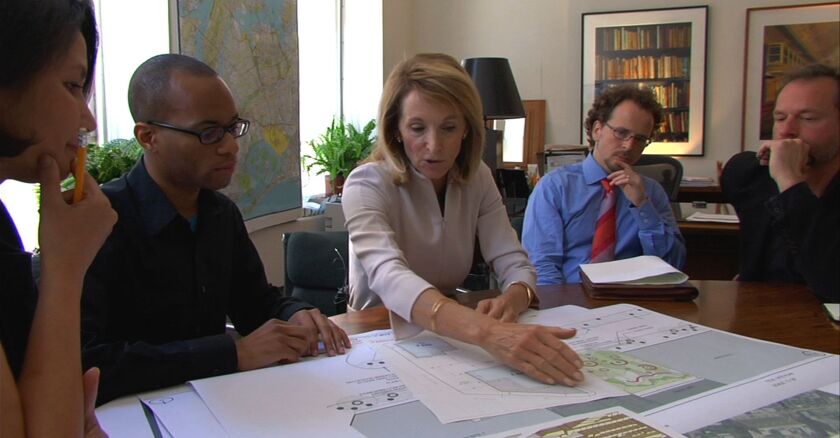In Bogota, buses get their own separated lanes, so they zip past cars. Passengers enter them through facilities more akin to subway stations than bus stops. And to supplement them, the city has a network of bike trails that, in some places, are better maintained than the adjacent roadways.
Creative solutions to urban problems are at the core of Urbanized, the new documentary by Gary Hustwit, which explores
Hustwit, who completed the film just two months ago, is currently on a worldwide tour of moving screenings, traveling from city to city as if he is a rock star. And in the urban design community, that’s exactly how he is being treated. At his stop in D.C. this week, a troika of influential urban policy leaders -- HUD Secretary Shaun Donovan, White House urban affairs czar Derek Douglas, and the Brookings Institution’s metro guru Bruce Katz -- emphatically thanked Hustwit for making the movie. Katz called it a “gift” to the world that will be more effective at making the case for cities than any report his organization could ever offer.
Hustwit’s documentary is being released at a time when the media seem to have been taken over by urbanophiles, with Richard Florida recently earning his own website from The Atlantic, Edward Glaeser’s Triumph of the City getting rave reviews and HBO developing a film based on the life Robert Moses.
But that saturation takes nothing away from Hustwit’s film, which will be available for online viewing next month. The film is driven by a sobering statistic presented in its opening minutes: half the world lives in urban areas, and by 2050, that figure will rise to 75 percent. Such growth provides huge opportunities and incredible challenges to those who design the places where we live, work and play.
The documentary is the third in Hustwit’s "design trilogy." His much-acclaimed Helvetica, which examined typology and graphic design, was followed by Objectified, which focuses on the design of everyday objects. But Hustwit tells Governing he didn’t plan on making a film about urban design at the onset. “I spent so much time talking to people around the world about design, and its role … I just felt I wasn’t done exploring,” Hustwit explains.
By the time he finished Urbanized, he had spent more time on it than either of the first two films, due to the breadth of geographies and topics explored. More than 300 hours of footage he shot has been culled to a concise 85 minutes.
Hustwit says he wasn’t trying to make a comprehensive movie, and of course, there was no way he could cover every major issue facing cities. Instead, he sought to give audiences a taste for the discussions and debates about city design and help foster those conversations.
Hustwit isn’t a policy wonk and was admittedly not part of the urban design community prior to filming Urbanized. But that works to his advantage. Instead of getting bogged down in the details, the film looks at broad problems – traffic, housing, crime – and presents case studies showing how cities are addressing them.
“It’s not my field, so it’s all new to me, which I think is really important when you’re making a documentary like this one – to constantly be discovering and learning about the subject matter as you’re making the film,” Hustwit says.
His favorite segments are those that focus on projects initiated by citizens, as opposed to the massive government-driven efforts. That’s reflected in the film's interviews. Audiences hear from policymakers like New York City Planning Director Amanda Burden. But they also meet everyday residents, like Detroit resident Mark Covington, who is building community gardens on abandoned land. The film takes viewers to more than a dozen diverse cities across the globe including Copenhagen, Mumbai,
Hustwit tells Governing that his intent wasn’t to provide specific policy prescriptions. Instead, he wanted to promote a dialogue. Still, the film does present plenty of success stories. Audiences meet
But Hustwit also explores the bad. He features experts explaining why
Throughout the movie, Hustwit juxtaposes cities in sometimes jarring ways to emphasize their contrasts. A segment on
Urbanized might not have all the answers about how cities will adapt in the coming decades. But it does provide audiences with some of the questions they should be asking. Hustwit's hope is that the film will inspire citizens to become more active in thinking about urban design in their own communities, while making governments more responsive.
"I know it's sometimes daunting for city government, because most of the time, their interaction with the public is when the public is against what they're doing," Hustwit says. Instead, he endorses "flipping that dynamic, so city government is really engaged with what residents want -- what are their dreams for the perfect city -- and getting residents to verbalize that."









